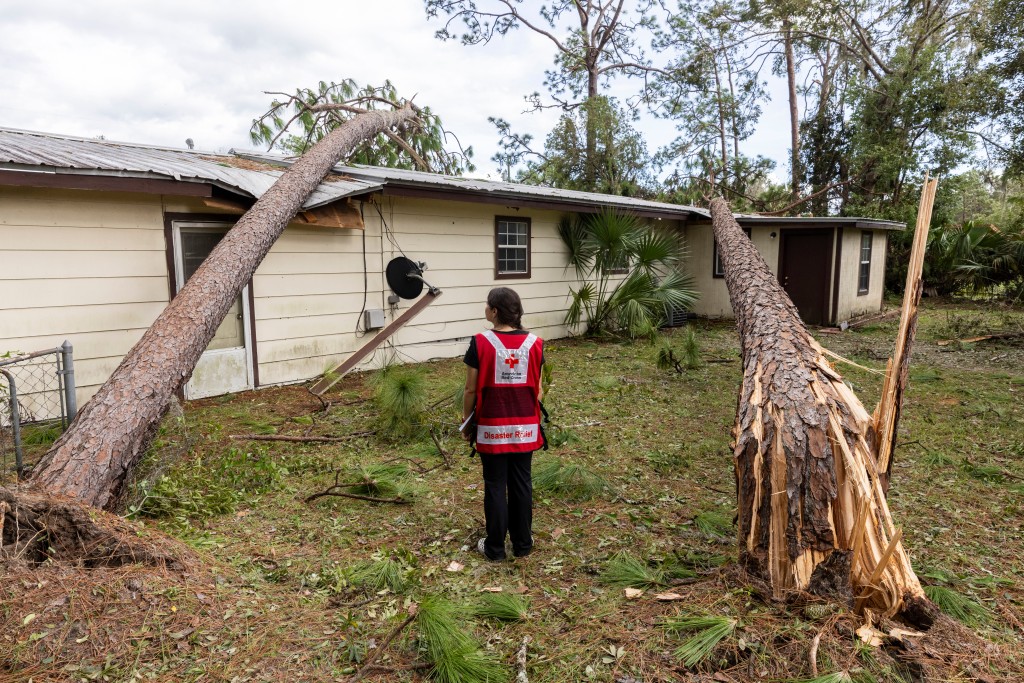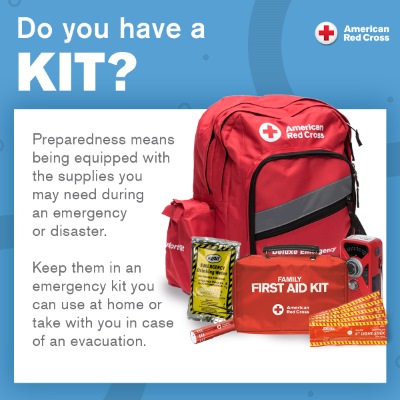Things to consider during National Preparedness Month
By Doug Bardwell, American Red Cross volunteer
As disasters become more frequent and more costly, the American Red Cross is
answering the calls of those in need, both here in Northern Ohio and around the world.
Just last week, here in Northern Ohio, the Red Cross assisted 62 families affected by the severe storms, providing more than $42,500 in financial aid.
Meanwhile, across the rest of the country, more than 1,000 Red Crossers answered the
call after historic wildfires, rainfall, and flooding ravaged people’s homes from the East
Coast to Hawaii in 21 separate major relief efforts. Again, the Northern Ohio region of
the Red Cross stepped up – providing 10 responders willing to travel great distances in
service of the Red Cross mission – to alleviate human suffering.

As unimaginable as these events have been, the reality is that as a humanitarian
organization, we are responding to nearly twice as many major disasters today as we
did 10 years ago. In the first half of 2023, there have been a record 15 disasters costly
in excess of a billion dollars each. As the disasters increase in size, and as more people
are displaced, the financial burden goes up correspondingly.
Having responded to numerous national disasters myself, I have been both broken-
hearted and proud at the same moment, as many disaster victims explain that our Red
Cross teams have provided the only assistance they’ve received immediately after the
disaster.
Four things you can do this September for National Preparedness Month
1) Prepare your family by preparing an emergency kit, ready to go at a moment’s
notice. Have a family plan on how and where everyone will meet up in case of a
disaster. Stay informed about potential disasters in your area, and learn what
your local government will do, should you need to evacuate. Visit
redcross.org/prepare for more information or download the free Red Cross
Emergency app, which also provides real-time weather alerts, open Red Cross
disaster shelter locations and more.
2) Donate blood. With each major storm, numerous blood drives are canceled,
reducing the supply of blood nationwide, and endangering others who rely on
blood for their medical conditions. Find a donation site near you at
redcross.org/blood.
3) Consider becoming a volunteer to help either locally or nationally. There are
jobs for all types of talents and ages, and training is comprehensive and free. Whether you can donate an hour a day or a couple of hours a month, chances
are there is a position for you with your local Red Cross office. Learn more about
positions available in your area at nohredcross.org/volunteer/
4) Cash Donation If time or family commitments prevent you from volunteering,
please consider a cash donation. Through fiscal year 2027, the Red Cross needs
to spend more than $1 billion on its climate crisis work, encompassing disaster
relief, international services and sustainability programs. Every donation helps
those who need it most, and no amount is too small. Go to redcross.org/donate.
Edited by Glenda Bogar, Red Cross volunteer
Posted by Ryan Lang, Red Cross Board Member and volunteer

